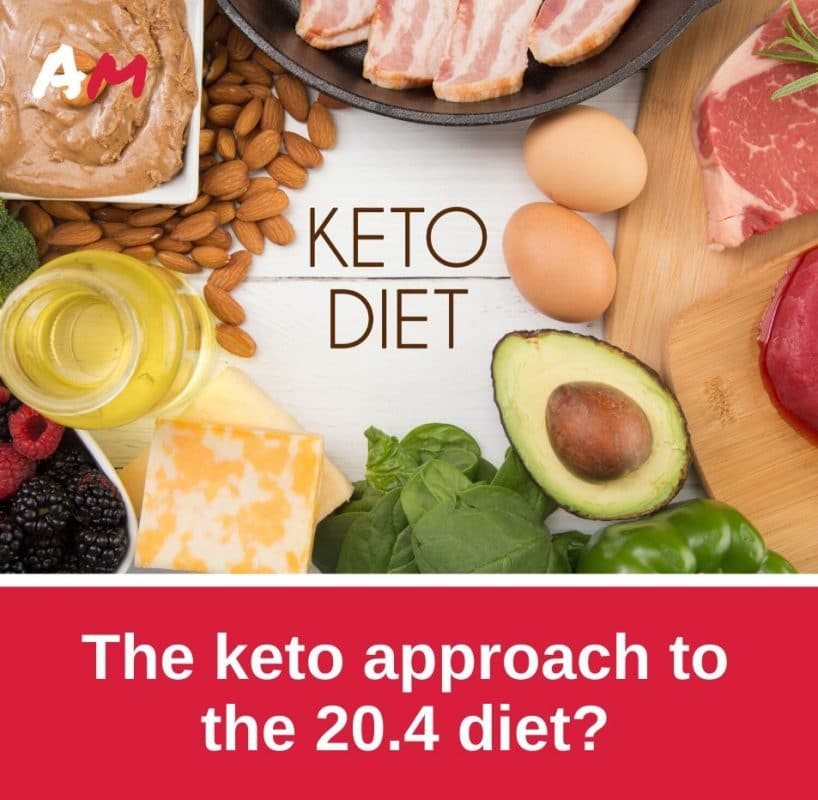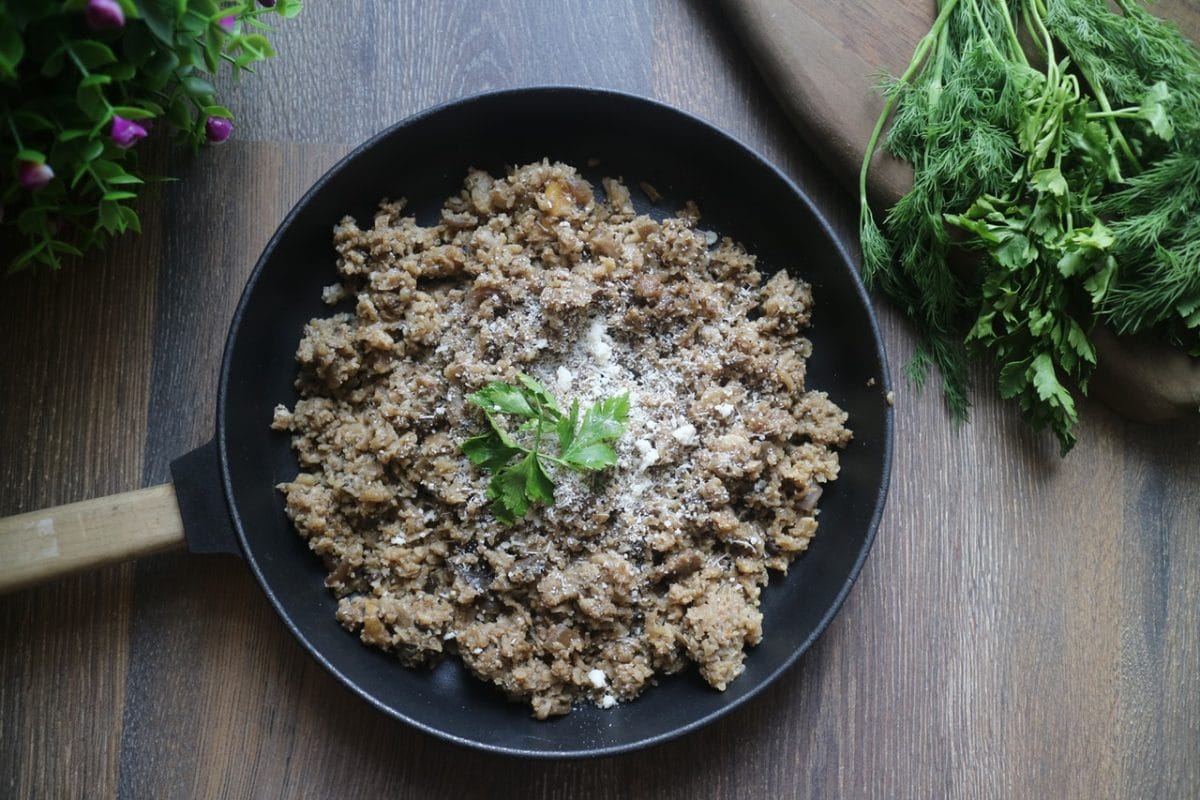Looking for advice on the 20/4 intermittent fasting diet specifically for people on keto?
Perfect, you’re in the right place! In this Athletic Muscle guide, you’ll learn:
- What is the 20/4 diet?
- What happens during the 20 hour fast window?
- Are there any benefits for keto dieters doing 20/4 fasting?
- Does 20/4 fasting help for fat loss on the keto diet?
- And much more!

There are many iterations of fasting, from fasting windows in a day, to whole day fasts to even multi-day fasts. Some even have cultural and religious drivers (Ramadan for example).
The keto community is increasing it’s use of this dietary technique more and more, as it can; accelerate the timeline for newbies to achieve a ketogenic state as well as acting as a tool for weight management.
Amongst the many iterations of fasting, keto dieters have become particularly enamoured with the intermittent fasting 20/4 method; the focus of our article!
What is the 20/4 diet?
20/4 fasting, or the warrior diet as it’s better known, was created in 2001 by Ori Hofmekler, a former member of the Israeli Special Forces, who transitioned into the field of fitness and nutrition.
Unlike other fasting protocols the warrior diet allows for a small amount of eating during the 20-hour window. So, it’s more so undereating for 20 hours of the day followed by a period of 4 hours in which you’re essentially able to eat as you please.
What happens in a 20 hour fast?
The longer we fast, the more of our internal stores of energy our body will break down for fuel. For the keto dieter this is extremely important as it essentially provides a fast track / sure fire way to achieve ketosis (and maintain it) and start burning excess fat!
Our body has two primary stores of energy; our glycogen (stored carbohydrate in muscle and the liver) and adipose tissue (our “fat stores”).
When we eat our body breaks down food into storable components or uses it for more immediate energy requirements. When we consume carbohydrates, particularly refined and or sugary carbohydrates, these are quickly broken down into glucose and released into the bloodstream.
Glucose can only enter our cells with insulin, a hormone made in the pancreas. Insulin brings glucose into the fat cells and keeps it there if our stores of glycogen are already quite full.
Read Also:How to get into the keto diet for beginners?
When insulin levels are higher more nutrients are shuttled into tissue for storage. When insulin levels are lower the opposite is seen; the body will break down it’s existing stores, typically in the form of reserve fat stores, and use those for energy!
In a round about way this is how a ketogenic diet works anyway (swapping out one fuel source for another in that instance with the aim to keep insulin levels lowered), and why many have employed fasting as a means to accelerate the ketosis process.
This occurs over the short term, but what about the long-term effects?

20/4 Intermittent Fasting Benefits
Well, there is sparse data on a 20/4 fasting approach itself, however a large-scale review paper of the existing literature supports its use as an alternative method to manage weight, improve your gut microbiome and even sleep quality!
The researchers also found that fasting had no detrimental effect on energy expenditure (however the research in that aspect is lacking and more work needs to be done on long-term studies).
Read Also:What’re all the keto foods?
Additionally, in the review by Mattson et al., (2017), the researchers found that fasting may offer some potential benefit for reducing risk of developing metabolic syndrome, type II diabetes and cardiovascular disease.
Whilst restricted to animal model studies, fasting has shown some promise as dietary approach which may reduce cancer risk!
20/4 fasting weight loss results
For the keto dieter, the warrior diet may offer an even greater advantage to fuel their fat burning endeavors. Synchronizing the “fat furnace effect” of the two diets may explain why, anecdotally, so many have achieved significant degrees of success on the warrior diet.
Additionally, the research also supports the notion that both the ketogenic and fasting approaches to dieting are highly effective weight loss tools which are just as good, if not better, than traditional calorie controlled and or low fat diets.
Read Also: BistroMD: Best Weight Loss Meal Prep Plan – Review
They may not be for everyone though and jumping head first into the deep end may not be advised. Some people may find that fasting on the keto diet is too difficult, or they may experience adverse reactions, such as overeating on non-fasting days, irritability and fatigue.
It may be worthwhile then focusing on perfecting one approach over the other first and then slowly incorporating the other in over time! Start with a 20/4 intermittent fasting approach and then slowly transition into a more keto focused dietary plan to optimize your results!
20/4 Intermittent Fasting Meal Plan
It may be difficult for first time keto dieters to incorporate both methods into their lifestyle at one time and, despite our warning against doing so, we know that people will aim to do this anyway.
Instead of expressing our frustration, it’d likely be more valuable to provide you with a framework of what a 20/4 fasting approach would look like whilst also following a ketogenic diet.
Of course, this depends on when you plan to “break the fast” so we’ll not title the meals as breakfast, lunch, dinner etc. but look at it from a 24-hour cycle.
The sleep component for 20/4
The first thing we’d advise you correct before anything else is to look at your sleep pattern if you are not already achieving seven to eight hours of high-quality sleep a night.
Missing out on important sleep time can impact upon your blood sugar regulation and insulin sensitivity, impacting your sense of fatigue, cravings, mood etc.
Fix this first, then focus on your food!
The 20-hour restriction window
Non-calorie fluids are your saviour during this time; an important tool to ensure adequate hydration and worth incorporating electrolytes into as well!
These diet drinks may also be an effective tool for managing cravings and appetite. There’s also no evidence to show they’ll have an effect on your ketosis!
Snacking on small amounts of low carb vegetables, certain nuts, dairy products, whole, hardboiled eggs, lean cuts of meat and clear broth is recommended by Hofmekler.
Read Also:What’s the best way for beginners to get into intermittent fasting?
Keeping these within a certain kcal range should be considered in context with your overall calorie intake goal. We’d recommend restricting it to around 20 – 30% of your total intake for that day.
The 4-hour feeding window
This is where you can get creative and adventurous with your choices. Of course, you’ll be behind on your calories for the day at this stage so it’s a perfect opportunity to take advantage of it with one to two main meals squeezed in to the eating window.
Salmon, chicken thigh, steak, whole eggs, burgers, ribs, cheese etc. are all perfect options to go for in this window and we’d recommend checking out the recipes at Greatist!
Using caffeine to assist your fasted keto lifestyle
Caffeine, in the form of black coffee, green tea, sugar free energy drinks etc. is a perfect accompaniment for any keto diet. It’s even more perfect for a fasted diet and combining the two just makes it a no brainer must have!
Caffeine can help regulate cravings, accelerate fat loss, fat oxidation, improve exercise performance, enhance recovery, reduce risk of certain non-communicable diseases and more.
We’d highly recommend! It may even be worth trialing some bulletproof coffee, as a sure-fire way to get you going in the morning!
Conclusion
Combining the warrior diet approach with a ketosis focused lifestyle may be the ticket to unlimited fat burning potential given that each compliments the other to achieve that goal!
Research supports the use of both as individual concepts so combining the two may only contribute to further benefit!
We’d advise easing yourself in to the approaches however, perfecting one before incorporating the other.
For those that’d rather jump straight into the “deep end” we’ve given you some eating tips but it’s more fully elucidated in the “The Warrior Diet” book.
We are keen to hear your feedback on combining the two and seeing your transformations!

